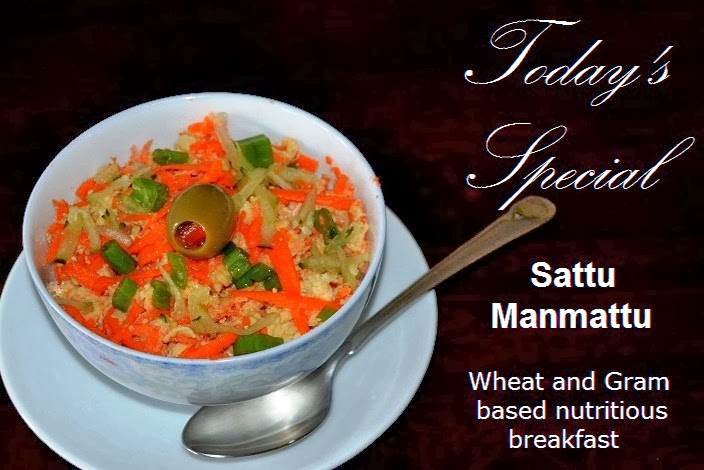Bread was a big NOooooo in
my childhood. There were many reasons from social, religious to hygienic.
History of bread dates back to around 3900 bc. Europe was baking bread and so
was Iraq and Egypt, where wheat was grown. Indians were never in baking. Maida (मैदा ), the refined flour was brought to
India by Moguls. That’s how we enjoy Naan (नान ),
Kulcha (कुलचा ) and alike. Muslims took Maida
to different parts of India and that’s how we have Malbar Parhota (मलाबार पऱ्हाटा ) also in the rice eating region. It was Portuguese
who brought bread to India. They could find wheat in Goa but couldn’t get
yeast. Bread needs proving and for that yeast is must. Portuguese couldn’t find
yeast in Goa and used local toddy for fermentation and that’s how bread came to
India. This bread was very different compared to the bread brought in by
British. British bread was a late entrant. Mumbai first got the bread from Goa, that was called Pav (पाव) and eventually it became a staple food for street food vendors with specialities
like Kheema (minced meat) Pav (खीमा पाव). Much later Mumbai saw the advent of Pav Bhaji (पाव भाजी) in 1960’s and
Vada Pav (वडा पाव) in 1970’s, followed by Misal Pav (मिसळ पाव) and alike. The British were late to
bring their bread to Mumbai. And when it came the bread became an elite food,
something for upmarket. Pav was available on all Gadis (गाडी), food carts, so the slot available for English bread was for
sandwiches, an upmarket product. Over a period things changed and Mumbai came
out with its own Mumbai sandwich. With this the fortunes for the bakeries
making British type of bread turned for better and these mostly belonged to Muslims.
 |
| Ring Mold |
 |
| Bread and other ingredients |
Pav that the Portuguese developed in India is similar to
sour bread. The sour bread dough has mild sour taste because of lactobacilli
that’s used for fermentation. Pav has a different taste compared to loaves of
white bread and its cousins. I always wondered why bread is called as Pav in
Mumbai? The first explanation that was made available made stay away from Pav.
I was told that the term Pav is used because the dough is kneaded by feet and
feet is called Pav in Hindi. Someone more considerate explained that the Pav is
a quarter of the loaf. In Hindi and Marathi Pav is one quarter. Finally one day
I learnt the truth. Bread is known as Pão in Portuguese, thus Lisbon to
Goa and Goa to Mumbai the Pão became Pav that’s phonetically similar to
the original word.
In India the bread has also undergone great changes in last
few years. Refined flour has been substituted with whole wheat flour, multi-grain flour and many imaginative combinations. Good or bad can be
discussed, merits and demerits can be debated but what ultimately matters is
the taste. The most common preparation of bread is sandwiches. The bread
remains same but stuffing changes, from veg to non-veg, and from cheese to
vegetables. One might get bored of this. Bread with jam, jelly, marmalade,
butter, peanut butter, cheese spreads is too mundane. The left over bread might
get turned in bread Upma (उपमा ) or French toast or Pakodas (पकोडा) similar. And this bread is
definitely not suitable with Kheema or Vada or Bhaji of the Pav Bhaji. For
these delicacies there is no substitute for Pav. So what else can be done with
few slices of leftover bread? And I have a simple recipe for you. Quick,
healthy, tasty and different. It’s Breadappa, my version of Uttappa from
leftover bread. Not that you cannot use a fresh bread, any bread is fine, be it
fresh or stale, white or brown.
Let’s see how it’s done. For two mini Breadappa you need one
bread slice, fresh or stale, a heaped tablespoonful chopped onion, half of that
quantity chopped tomatoes, few finely chopped chilies if you like, one teaspoon
of corn flour/starch, quarter teaspoon baking powder, salt as per your taste
and little oil. Cut bread slice in few pieces, place these in small jar of
grinder/mixer. Run the machine for ten second. You should get powdered bread
like coarse semolina (Rawa, रवा ). Put this powder in a bowl. Add corn starch and
baking powder. Add salt to taste. Mix well. Place a non-stick fry pan on gas
flame, put little oil. While fry pan is getting heated, slowly add water to the
mixture in the bowl. Keep stirring. The batter that is being made should be
thick, like whipped yogurt. Never make it thin like Dosa (डोसा ) batter. The batter
should have spreadability but should not flow. Now place the ring mold on the
fry pan, pour the batter in the mold may be two tablespoon for a 3.5” ring mold. If needed spread the batter with a ladle/spoon. Place chopped onions,
tomatoes, chili on top, dab a little to firm these up. Remove the ring mold and let cook on medium flame till sides get loose and bottom turns golden
brown. Now turn the Bredappa and let onions and tomatoes get cooked. Turn
around after you get the desired look of the onions and tomatoes. Remove from
the pan and place it in serving plate. Again put the ring mold and repeat the
procedure for second Breadappa.
 |
| Breadappa |
P.S. If you don’t have ring mold, you may try to spread the
dough as you would do for Dosa. Else you can order online for ring molds.
These are available in steel as well as silicon. Not very expensive and can be
routinely used for frying eggs.










